#doge of venice
Explore tagged Tumblr posts
Text

Binding on a Venetian Dogale, second half of the 16th Century.
A Dogale is a document issued by a Venetian Doge, the highest elected official in several Italian Republics.
In the collection of Biblioteca Nazionale Braidense in Milan.
#beautiful books#book blog#books books books#book cover#books#book design#venetian dogale#16th century#venice#doge
267 notes
·
View notes
Text
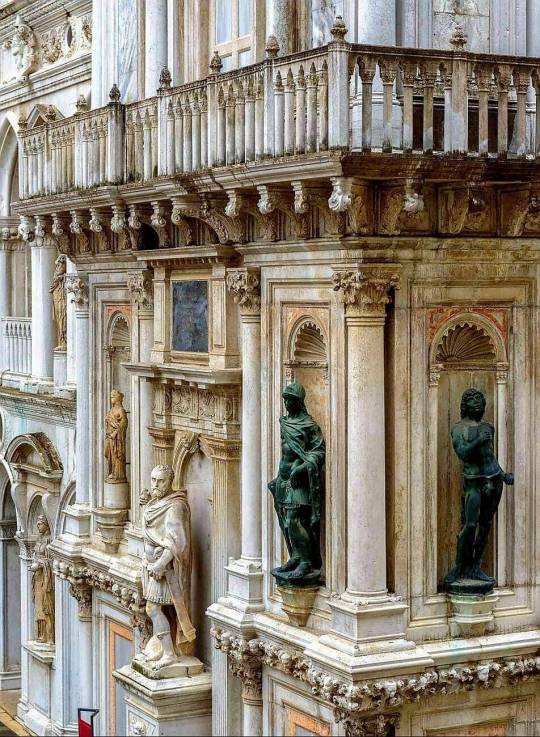
Palazzo Ducale facade, Venezia, ITALIA
#palazzo ducale#ducal palace#palacio ducal#doge's palace#venezia#venice#venecia#italy#italia#europe#europa
478 notes
·
View notes
Text

Giorgio de Chirico (Italian, 1888-1978), Venezia, Palazzo Ducale [Venice, The Doge's Palace], latter half of the 1950s. Oil on canvas, 40 x 50 cm.
169 notes
·
View notes
Text
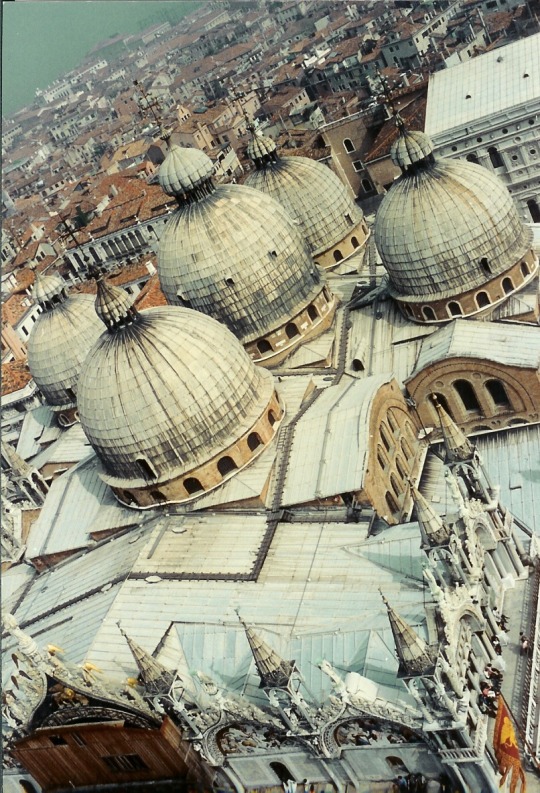
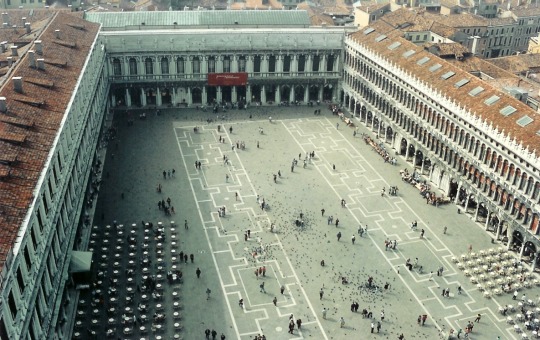

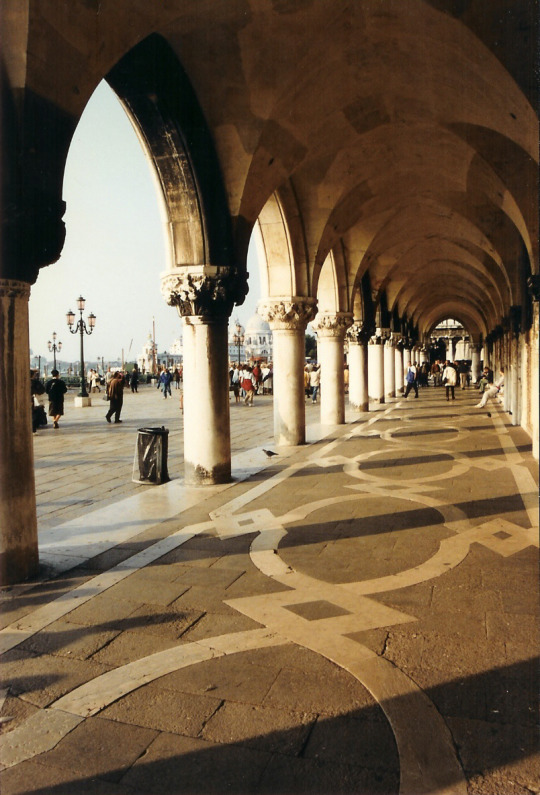
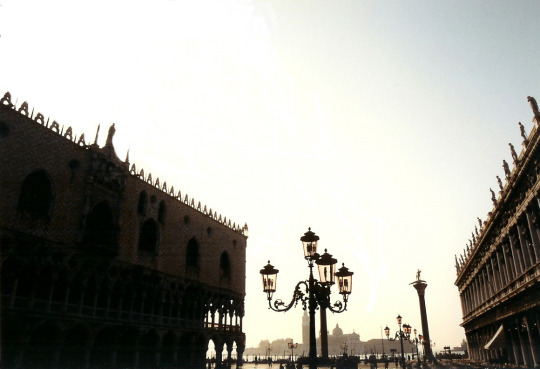
#italy#venice#venezia#italia#photography#piazza san marco#basilica di san marco#st mark's basilica#st mark's square#palazzo ducale#doge's palace#missofotografia#idylesaphique#photographs#photograph
43 notes
·
View notes
Photo
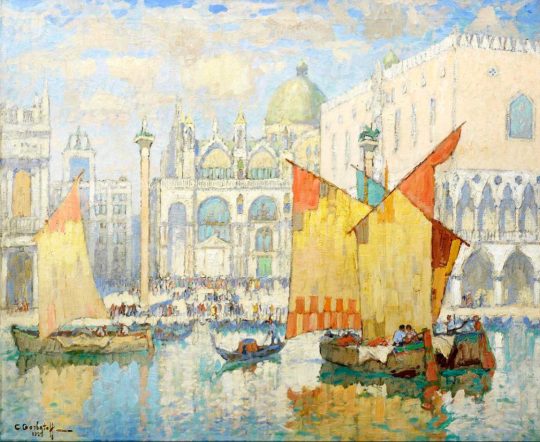
Konstantin Ivanovich Gorbatov (Russia 1876-1945 )
Venice. The Doge's Palace. 1929. Oil on canvas.
228 notes
·
View notes
Text

Motoboat under the bridge by the Doge's palace
We're on a little tour of Venus here. Venice, I mean Venice. But the Venusians were nice.
#venice#italy#doge's palace#photographers on tumblr#original photographers#urban#photography#landscape#bridge#gothic#architecture#italian baroque
24 notes
·
View notes
Text

Juno Showering Gifts on Venetia (1554-1556) by Paolo Veronese (1528–1588), oil on canvas, 365 × 147 cm, Doge's Palace, Palazzo Ducale, Venice
#juno showering gifts on venetia#paolo veronese#painting#oil on canvas#doge’s palace#palazzo ducale#venezia#juno#venice#venetia#art#fine art#mythology#greek mythology#roman mythology#mythological painting#16th century#my upload
44 notes
·
View notes
Text
okay, lemme just say: Gil-galad, who hated being the king Gil-galad, who had never wanted to be the king in the first place Gil-galad, who was crowned anyway, because there were hardly any finweans left around and the noldor in Beleriand needed a king, just so they can hold onto something, have some semblances of normality in the apocalyptic post-nirnaeth time Gil-galad, who became the high king when he was only 13/14 if we convert to human years, who was barely able to hold back tears in front of crowds as the crown was being placed upon his head Gil-galad, who had been raised by Círdan on Balar, among Teleri, and now he was the number 1 person in a culture that he didn't even feel like was truly his. A culture that so far he had only been taught about, had never participated in. Gil-galad, who politically hardly ever got to make his own decisions, whose role as the king was mostly limited to signing up whatever the parliament needed to validate and who was ascribed the blame whenever an idea backfired Gil-galad, who always wished he could've just lived a simple life on Balar, alongside Teleri, worked on a fishing boat and stuff like that, but instead he was manoeuvred into politics and bureaucracy, and an office that everyone at this point already knew was cursed, overall an enormous amount of responsibility, when he was basically still a child Gil-galad who was handling it all quite well until the third kinslaying happened Gil-galad, who was something like 15/16 in human years when the third kinslaying happened, who then had to face the reality of his reign, which was: he held little to no power. He was just a teenager, put on a throne, so the noldorin power in beleriand didn't seem to be crumbling as badly as it actually was. And he definitely wasn't able to protect his people Gil-galad, who was still doing his best after the third kinslaying, but also he started turning completely self-destructive in his free time. Like, there wasn't a single weekend he wouldn't spend at some party, drinking until he blacked out, taking whatever drugs he could get, getting involved in all kinds of reckless/precarious sexual behaviours Gil-galad, who just wanted someone to show up and take over the kingship , but was aware that all hopes for it had been wiped out when the feanorians attacked Sirion. That any hopes were gone along with Eärendil and his little sons. Gil-galad, whose role was mostly representative, so he had to be present at all kinds of events, no excuses. ,,What do you mean you need a day off? You're the king, ffs!!! Get your hangovered ass over there, it's not like you're going to work'' It pretty much resulted in young Gil-galad quite often showing up in public hangovered/ still lightly drunk/drugged/ overall messy af. And aside from the toll it took on his reputation, like- the king who has some serious troubles with substance abuse is probably easy to be influenced on many matters; it's also the fact that he was crowned to raise the morale among noldor, to message: ,,Look, we still have a king, it's not that bad!" How does it impact the Noldor when they repeatedly see their king barely able to stand upright or retching in some darkened corner? Not well, to say the least. Gil-galad, who felt trapped by the kingship. Gil-galad, who knew there was no way out of it for him, other than by suffering a painful death like basically every one of his predecessors Gil-galad who was being self-destructive and he didn't care about getting hurt because ,,hey, I have no control over my own life anyways :)))'' but also Gil-galad, who grew out of his teenage years and in his early adulthood had some ,,I can't keep living like this" moments , especially after waking up somewhere on the cold ground, feeling like shit and covered in vomit and all other kinds of fluids either his own or someone else's or both
Gil-galad who was in his early twenties (again, converted to human years) and decided to get his life together, because if he's trapped anyway, he can as well try to make it a little less horrible for himself
Gil-galad, who had maybe never got quite the amount of support he needed from Círdan, but Círdan had definitely taught him a lot and enough for him to be able to get by in life and politics
Gil-galad, who started getting his life together in his early twenties, and even if he stayed dangerously close to alcohol/drugs addiction and kept his inclination for partying for the rest of his life, he was actually doing fine
Also sometime after the War of Wrath began, it turned out that Eärendil's sons had made it out alive after all, and maybe it wasn't fixing all Ereinion's problems, but it sure was SOMETHING
#silmarillion#the silmarillion#gil galad#ereinion gil galad#his teenage years were shit#it got only slightly better later in his life#y'all know how doges of venice had extremely limited power because everyone feared they would become dictators?#I imagine that gil galad had a bit more liberty than them but still he was controlled severely on many matters almost all the time#the only exception were emergencies#and these also were scrutinized afterwards#he needed the parliament's agreement for basically everything#like he couldn't even leave Balar island/ (later in his life) Lindon city without their permission#and all of this because the Noldor at the time were afraid that another king would pull a Fëanor on them#a.k.a. make some really important decisions (like a relocation of almost whole nation to another continent) on a whim#without anyone controlling that#I swear I love this character#he my favourite babygirl#he ain't even a girl but: cool girl/ party girl/ cinnamon roll baby#silmarillion headcanon#cw: substance abuse
65 notes
·
View notes
Text

#italy#venice#san marco square#doge's palace#gothic#architecture#mist#romance#history#mystery#culture#🇮🇹
33 notes
·
View notes
Text

Doge's Palace in Venice, Veneto region of Italy
Italian vintage postcard
#doge#briefkaart#photography#vintage#tarjeta#postkaart#postal#palace#venice#italy#photo#postcard#historic#carte postale#italian#veneto#region#ephemera#sepia#ansichtskarte#postkarte
13 notes
·
View notes
Text




The Doge's Palace - Venice, Italy
#italy#venice#italia#venezia#doge#doge's palace#palace#gold#wanderlust#travel#vacation#photography#my photography#aidan in hell
11 notes
·
View notes
Text
Countries that are no more: Republic of Venice (697AD-1797AD)
The first in a series I hope to feature on providing high level overviews of countries that existed and were influential to history or obscure and lost to most memory in time. The first up is the Republic of Venice.
Name: Serenisma Republega de Venesia (Venetian). In English this translates to the state's official name The Most Serene Republic of Venice. Also referred to as the Venetian Republic, Republic of Venice or just Venice.
Language: The official languages were the Romance languages of Latin, Venetian & later Italian. The regional dialect of Vulgar Latin in Northeastern Italy known as Veneto was the original language of Venice. This evolved in Venetian which was attested to as a distinct language as early as the 13th century AD. Venetian became the official language and lingua franca of the everyday Venetians and across parts of the Mediterranean although Latin would still be used in official documents and religious functions. Overtime, modern Italian was spoken in Venice though the Venetian language remains technically a separate language in Italy's Veneto region and the surrounding areas to this day.
Minority languages across the republic's territory included various Romance languages such as Lombard, Friulian, Ladin, Dalmatian and non-romance languages such as Albanian, Greek & Serbo-Croatian.
Territory: The republic was centered on the city of Venice founded in the Venetian lagoon on the north end of the Adriatic Sea to the northeast coast of the Italian peninsula. It also included the surrounding regions of mainland northeast Italy in the regions of Veneto and Friuli and parts of Lombardy. This became known as the terraferma or the mainland holdings of the republic. It also possessed overseas holdings in modern day Croatia, Slovenia, Montenegro, Albania, Greece & Cyprus.
Symbols & Mottos: The main symbol of Venice was its flag which had the famed Winged Lion of St. Mark. This represented the republic's patron saint, St. Mark. Mark the Evangelist after whom the Gospel of Mark in the New Testament in the Bible is named. Mark's body and holy relics were taken by Venice and said to be housed in the Basilica di San Marco (St. Mark's Basilica) in Venice itself. Variations of this flag differed during times of peace & war. During peace the winged lion is seen holding an open book and during war flags depicted the lion with its paw upon a bible and an upright sword held in another paw.
The republic's motto in Latin was "Pax tibi Marce, evangelista meus" or in English "Peace be to you Mark, my evangelist."
Religion: Roman Catholicism was the official religion of the state but Venice did have minorities of Eastern Orthodox & Protestant (usually foreign) Christian denominations at times in its territory and it also had small populations of Jews and Muslims to be found in Greek and Albanian territories during the wars with the Ottoman Empire.
Currency: Venetian ducat and later the Venetian lira.
Population: Though population varied overtime for the republic due to a variety of factors such as war & changing territory and disease & its subsequent effects. There was rough population recorded of 2.3 million people across all of its holdings in the mid sixteenth century (circa 1550-1560). The vast majority of its population was found in the terraferma of northern Italy and the city of Venice itself with its concentrated population on the islands within the Venetian Lagoon. The Greek island of Crete and the island of (Greek speaking) Cyprus were the most populous overseas possessions of the republic's territory. The rest of the population was found its various holdings in the Balkans mostly along the Adriatic coastline.
Government: The republic followed a complex mixed model of government. Essentially it could be characterized as a mixed parliamentary constitutional republic with a mercantile oligarchy ruling over it in practice. It had no formal written constitution, and this led to a degree of evolution without exactly defined roles often in reaction to happenings in its history. The resulting government became more complex overtime as institutions became increasingly fragmented in their size, scope and duties, some almost obsolete but still retained and others not fully defined. Yet, the republic managed to function quite well for most of its history. It incorporated elements of oligarchy, monarchy & limited democracy.
It's head of state and government was known as the Doge which is akin to the term of Duke. Though this similarity of name ends there. The Doge was neither similar to a duke in the modern sense nor was it meant as a hereditary position. The doge was rather a lifetime appointment much like the Pope for the Roman Catholic Church. Furthermore, doges were elected by the ruling elite of Venice, namely its wealthy oligarchy merchant class. The doge didn't have well defined & precise powers throughout the republic's 1,100-year history. It varied from great autocracy in the early parts of the republic to increasing regulation and restriction by the late 13th century onward. Though the doge always maintained a symbolic and ceremonial role throughout the republic's history. Some doges were forcibly removed from power and post-1268 until a new doge could be elected, the republic's rule transferred to the most senior ducal counsellor with the style of "vicedoge". After a doge's death following a commission was formed to study the doge's life and review it for moral and ethical transgressions and placed judgment upon him posthumously. If the commission found the deceased doge to have transgressed, his estate could be found liable and subject to fines. The doge was given plenty of ceremonial roles such as heading the symbolic marriage of Venice to the sea by casting a marriage ring into the sea from the doge's barge (similar to a royal yacht). Additionally, the doge was treated in foreign relations akin to a prince. It's titles and styles include "My Lord the Doge", "Most Serene Prince" and "His Serenity". The doge resided in the ducal palace (Palazzo Ducale) or Doge's Palace on the lagoonfront in Venice next St. Mark's Basilica and St. Mark's Square.
While the doge remained the symbolic and nominal head of the government, the oligarchy remained supreme overall. The supreme political organ was the 480-member Great Council. This assembly elected many of the office holders within the republic (including the doge) and the various senior councils tasked with administration, passing laws and judicial oversight. The Great Council's membership post 1297 was restricted to an inheritance by members of the patrician elite of the city of Venice's most noble families recorded in the famed Golden Book. This was divided between the old houses of the republic's earliest days and newer mercantile families if their fortunes should attain them property ownership and wealth. These families usually ranged between 20-30 total. They were socially forbidden from marrying outside their class & usually intermarried for political and economic reasons. Their economic concerns were chief to the whole of the republic and most centered on Eurasian & African trade throughout the Mediterranean Sea's basin. Members of these families served in the military and eventually rose to prominent positions of administration throughout the republic.
The Great Council overtime circumscribed the doge's power by creating councils devoted to oversight of the doge or executive and administrative functions (similar to modern executive cabinets or departments) whereas the doge became more and more a ceremonial role. The also created a senate which handled daily legislation. They also created a Council of Ten set to have authority over all government action. Other bodies were formed from this Great Council and others overtime. This resulted in intricate and overlapping yet separate bodies which found themselves subject to limitations with various checks on virtually each other's power. Essentially running as committees or sub-committees with checks on another committee's powers. These bodies weren't always completely defined in their scope and overtime their complexity led to battles to limit other's power (with limited success) along with gradual obsolescence and sometimes slow grinding administration.
Military: The military of Venice consisted of a relatively small army and a powerful navy. The famed Venetian Arsenal in Venice proper was essentially a complex of armories and shipyards to build and arm Venice's navy. The arsenal in Venice has the capacity to mass produce ships and weapons in the Middle Ages, centuries before the Industrial Revolution allowed for modern mass production in economic and military applications. Venice's military was designed towards protecting it possessions both in Italy and its overseas territories. The primary concern was to secure Venice's trade routes to the rest of Europe as well as Asia & Africa. It faced opponents' overtime ranging from the Franks, the Byzantine Empire, Bulgarians to other Italian city-states, France, Austria, the Ottoman Empire and Barbary Corsairs along with European pirates in the Adriatic and Mediterranean. It played key roles as a naval transport in other powers including throughout the Crusades. It also played a key role in the infamous Fourth Crusade which culminated in the Sack of Constantinople in 1204 AD, an event which fractured the Byzantine Empire into a half-century of civil war between successor states before a weakened revival in the mid 13th century. The Byzantine Empire would linger until the 15th century when the Ottoman Empire finally conquered its last remaining portions. Many attribute this loss to in part to its weakness still resulting from that 1204 sack lead by Venice. The Venetian military would exist until the republic's end when The French Republic's Army of Italy under Napoleon Bonaparte conquered the republic, a conquest in which the Venetians surrendered without a proper fight.
Economy: Venice's economy was based largely in trade. Namely control over the salt trade. Venice was to control salt (preservative of food) production and trade throughout the Mediterranean. It also traded in commodities associated with the salt trade routes to Eurasia and Africa. These commodities could include other foodstuffs (grains, meats & cheeses), textiles & glassware among other items.
Lifespan: 697AD-1797AD. Though the exact founding of Venice itself hasn't been determined. It is traditionally said to have taken place in the year 421 AD. At a time when Roman citizens in northeast Italy were escaping waves of Germanic & Hunnic barbarian invasions that contributed to the collapse of the Western Roman Empire. The going theory is that these Romans evaded barbarian attacks by building their homes in the Venetian Lagoon by hammering wood stakes to form a foundation which sunk into the muddy shallows and petrified. Upon which they built their homes and created a cityscape marked by streets and canals interlaced. Venice remained a community of fishermen and merchants and was nominally under the control of the surviving Eastern Roman Empire (Byzantine Empire). It avoided barbarians overrunning the land but also was removed enough from Constantinople that it was relatively autonomous and became strategically important as a port. Other islands in the lagoon also banded together with Venice in a loose confederation of sorts by the 6th and 7th centuries which increased economic productivity and security for the city. The first doge was said to have been elected in 697 AD under the name Paolo Lucio Anafesto, though there is dispute about his historicity. Anafesto supposedly ruled until 717 AD. This is traditionally regarded as the foundation of the Republic of Venice.
Venice's third doge was Orso Ipato who reigned from 726-737 and he is the first undisputed historically recorded doge whose existence was confirmed. Orso also known as Ursus was known to strengthen the city's navy and army to protect it from the Lombard Germanic invaders who had overrun and ruled Italy by that time. Though nominally part of the Byzantine Empire, by 803, the Byzantine Emperors are said to have recognized Venice's de-facto independence. Though this view is disputed somewhat, it nevertheless remained virtually independent until its collapse in 1797.
Venice also partook in the slave trade of non-Christian European populations from Eastern Europe and transferred them to North Africa, selling them to the Arab and Berber (Moors) of the Islamic world.
As the 9th century progressed, the Venetian navy secured the Adriatic and various trade routes by defeating Slavic and Muslim pirates in the region. The Venetians also went onto battle the Normans who settled in southern Italy and Sicily in the 11th century.
Venice provided naval transports for Crusaders from Western Europe starting with the successful First Crusade.
The High Middle Ages (1000AD-1350AD) saw the wealth and expansion Venice increase dramatically. However, over this period Venice gradually came into mixed relations with its former ruler the Byzantine Empire. The Byzantine Empire endured corruption, civil war and foreign invasion which saw it alternate between periods of waning power and restored power. Venice provided the Byzantines with an increased naval force when needed and many trading commodities. In exchange for this, Venice was granted trading rights within Byzantine territory and a place within the "Latin Quarter" for Western Europeans in Constantinople. The Byzantine populace though calling themselves "Romans" having taken on the political & cultural institutions of the Roman Empire which lived on in the East long after the Western half's collapse, were in fact mostly Greek by ethnicity, language and culture. Their religion was the Eastern Orthodox or Greek Orthodox branch of Christianity which was often at odds with Roman Catholics of Western Europe. Resentment at the religious and cultural differences along with the economic displacement the Venetians and other Italian merchants from Genoa & Pisa had caused in Constantinople's maritime & financial sectors contributed to the 1182 "Massacre of the Latins" in which the Byzantine Greek majority of the city rioted and slaughtered much of the 60,000 mostly Italian Catholics living within the city. Thousands were also sold into slavery to the Anatolian Seljuk Turks.
This event lingered in Venice's memory as its trade in the city was reduced for awhile. Though trade resumed between the Byzantines and the West again shortly thereafter, the event soured the perception of the Greeks to Western Europeans. This along with a subsequent power struggle for the throne of the Eastern Roman Emperor fell into Venice & Western Crusader's hands in 1202. Looking to originally ferry Western Crusaders to the Levant against the Islamic Ayyubid Sultanate of Egypt & Syria. Events transpired that devolved into Venice conspiring under its doge Enrico Dandalo along with other Western leaders and a Byzantine claimant to the throne that resulted in the first successful sacking of Constantinople in 1204. The city was ransacked, some Greek citizens murdered by the Crusaders & classical works of art destroyed or looted (most famously the four bronze horses of St. Marks in Venice) and politically, the Byzantine Empire would be temporarily fractured between competing Greek dynasties while the Crusaders along with Venice created the short-lived Latin Empire, which controlled Constantinople and its environs while Venice also acquired Greek territories which it was to hold for centuries. Venice also came into conflict with the Second Bulgarian Empire at this time as its support of the Latin Empire of Constantinople encroached on the Bulgarian's land. Eventually by the mid 13th century the Latin Empire (never fully stable) collapsed, and the Byzantine Empire was restored until the mid-15th century but forever weakened as a result of the 1204 sacking of its capital.
Venice reached trade deals with the Mongol Empire in 1221. As the century wore on, it also engaged its rival in Western Italy Genoa in some warfare.
The 14th century is generally regarded as Venice at its peak as it faced down Genoa in a number of battles and came to be the most dominant trading power in the Mediterranean, though it was impacted by the Black Death plague. Nevertheless, into the 15th and even 16th centuries, it partook in a number of wars which saw it gain territory on the Italian mainland, establishing its terraferma domain.
By the 16th late 15th and into the 16th century new threats had emerged such as the Turkish Ottoman Empire. The Ottoman capture of Constantinople in 1453 is seen as the end of the Middle Ages as the last political vestiges of the Roman Empire vanished from the world stage. However, a number of Byzantine Greeks escaped on Italian ships during the conquest of the city and others escaped Greece in subsequent years. These refugees brought with them artistic and cultural heritages that reemphasized the classical forms of Ancient Greece and Rome and lead to the Italian Rennaisance in art & other forms of culture. Ideas which emphasized humanism and spread to elsewhere in Europe overtime.
While there was a cultural flourishing in Venice and elsewhere due to the Rennaisance. There was also the first signs of economic and political decline as well from the 16th century onwards. The Ottoman dominance in the Eastern Mediterranean meant the traditional trade routes to the East were cut off by an often-hostile Muslim power. Additionally, other maritime powers in the West namely Spain & Portugal had recently begun exploring the continents of South & North America and in time France, England & the Netherlands would join in them. This decline in Eastern trade and the newfound trade routes dominated by other European states in the Americas and Asia (by way of rounding Africa) would render trade with Venice gradually obsolete. Venice would still maintain what trade it could in the Mediterranean, but it also focused on production and placed increasing importance on its Italian mainland possessions rather than just its declining position overseas in Greek territories, including the loss of Cyprus to the Ottomans in 1571. Though the Venetian navy with other Christian powers won the notable naval victory against the Ottomans in 1570 at Lepanto.
It was also involved in the Italian Wars between various rival city states and the power struggle between the Papacy, France and the Hapsburg realms of the Holy Roman Empire and Spain.
Other factors that impacted the declining trade in the 17th century included an inability to keep up in the textile trade elsewhere in Europe, closure of the spice trade to all but the Spanish, Dutch, Portuguese, French and English and the Thirty Years War (1618-1648) which impacted Venice's trade partners.
Ongoing wars including a 21-year siege of Crete by the Ottomans saw further losses. Although Venice partook in the Holy League headed by the Holy Roman Empire (under Hapsburg Austria) which saw some minor temporary gains from the Ottomans in southern Greece before losing them again in the early 18th century.
War and loss of overseas territories along with a stagnant economy was slightly offset by a somewhat strong position in northern Italy. Nevertheless, its maritime fleet was reduced to a mere shadow of its former glory and it found itself sandwiched still between Austria and France. Over the rest of the 18th century, economic stagnation and social stratification remained prevalent while Venice remained in a quiet peace. However, the French Revolution reignited war in Italy and while Venice remained neutral, it would soon get caught up in events.
The Austrians and the Piedmontese (Italian) allies were beaten by the French Republic's Army of Italy headed by an up-and-coming general named Napoleon Bonaparte. Bonaparte and the French army crossed the borders of northern Italy into Venetian neutral territory to pursue the Austrians. Eventually half of Venice's territory was occupied by France and the remainder of the mainland was occupied by Austria. By secret treaty the French and Austrians were to divide the territory between themselves (Venice was consulted in the matter). Bonaparte gave orders to Venetian doge Ludovico Manin to surrender the city to French occupation to which he abdicated his power. The republic's Major Council met one last time to officially declare an end to republic on May 12th, 1797, after 1,100 years. Venice was placed under a provisional government and ironically the French looted Venice stripping it of artworks to grace the Louvre Museum in Paris along with the Arc d'Triomphe, taking the famed four bronze horses of St. Mark's to adorn the triumphal arch in Paris, the very same horses Venice had confiscated from Constantinople in 1204. It was a symbolic end to the republic, the irony of which did not escape commentators at the time. Following Napoleonic France's final defeat in 1815 the horses were returned to Venice and St. Mark's where they remain today. Venice itself was given over to the Austrian Empire.
The Republic of Venice has a historical legacy in terms of its economic accomplishments through control of trade and its innovative mass production of ships, armaments & trade commodities. It also holds a political legacy worthy of study given it was a unique and enduring polity for 1,100 years. One that maintained a complex and at times chaotic form of government that still managed to function and endure for centuries.

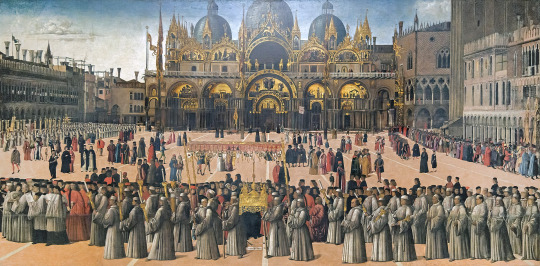
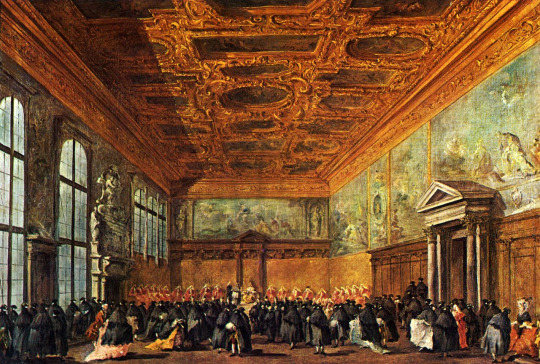
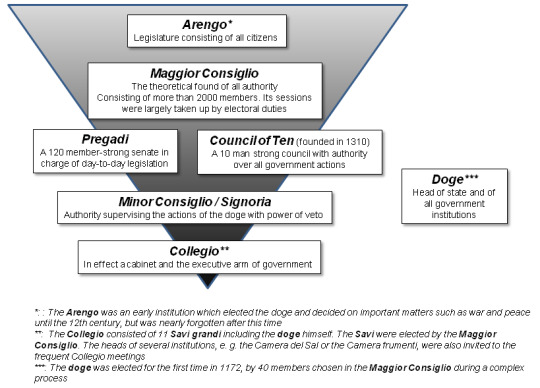
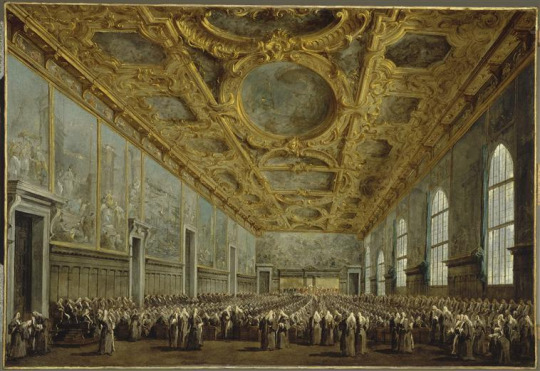
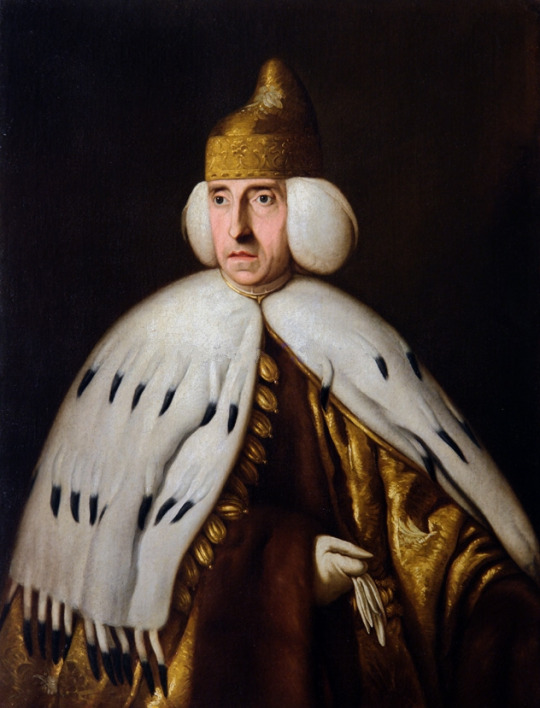
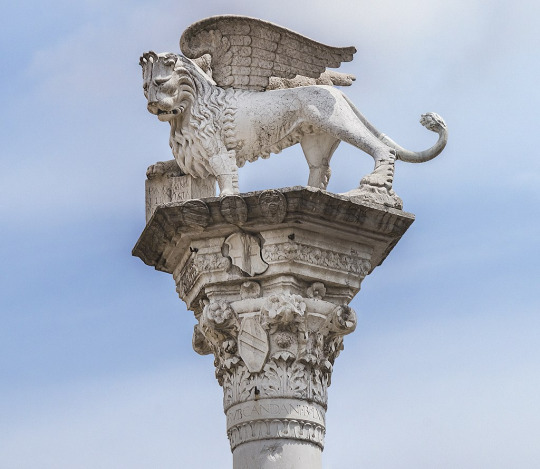

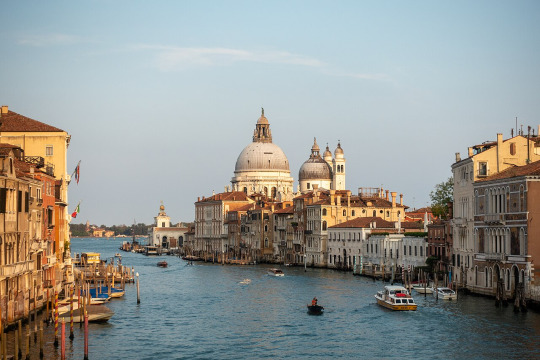
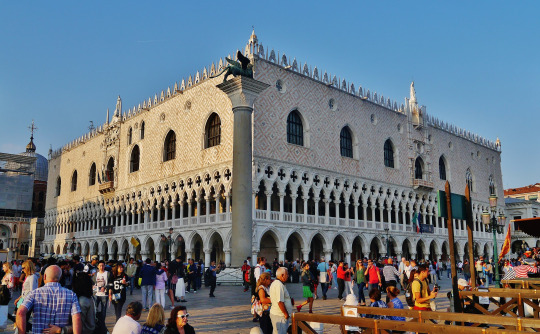
#military history#middle ages#venice#venetian republic#italy#politics#political history#trade#economics#governance#commerce#ottoman empire#spain#byzantine empire#napoleon#doge#republic
73 notes
·
View notes
Text

13 notes
·
View notes
Text
Detail of the Doge's Palace in Venice, built in the Venetian Gothic style. The palace was the residence of the Doge of Venice, the supreme authority of the former Republic of Venice. It was built in 1340 AD and enlarged and modified in the following centuries.

(English / Español / Italiano)
Detalle del Palacio Ducal de Venecia, construido en estilo gótico veneciano. El palacio fue la residencia del Dux de Venecia, la autoridad suprema de la antigua República de Venecia. Fue construido en 1340 d.C. y ampliado y modificado en los siglos siguientes.
-------------------------------------------------------------------------
Particolare del Palazzo Ducale di Venezia, costruito in stile gotico veneziano. Il palazzo era la residenza del Doge di Venezia, l'autorità suprema dell'ex Repubblica di Venezia. Fu costruito nel 1340 d.C. e ampliato e modificato nei secoli successivi.
#venice#venezia#venecia#palazzo ducale#palacio ducal#doge's palace#s.XIV#14th century#gotico#gothic style
18 notes
·
View notes
Photo
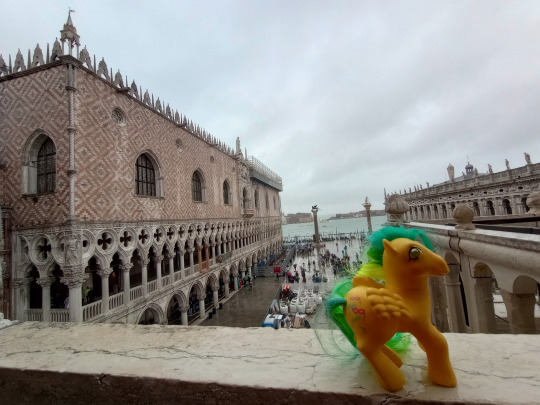
Masquerade is looking around Venice (and the surrounding islands).
In Italy.
This is photo number 18 of 366.
26 notes
·
View notes
Text

The Giant's Staircase, official entrance to the Doge's Palace. That's Mars on the left, and Neptune on the right, giant statues to make the Doge seem small at his coronation.
#venice#italy#doge's palace#photographers on tumblr#original photographers#staircase#statues#public art
15 notes
·
View notes